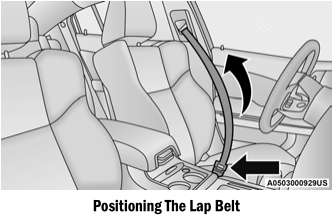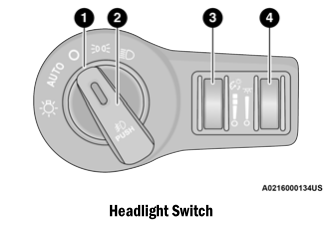Dodge Charger: OCCUPANT RESTRAINT SYSTEMS / Lap/Shoulder Belt Operating Instructions
Dodge Charger 2011-2025 Owner's Manual / SAFETY / OCCUPANT RESTRAINT SYSTEMS / Lap/Shoulder Belt Operating Instructions
- Enter the vehicle and close the door. Sit back and adjust the seat.
- The seat belt latch plate is above the back of the front seat, and next
to your arm in the rear seat (for vehicles equipped with a rear seat). Grab
the latch plate and pull out the seat belt. Slide the latch plate up the webbing
as far as necessary to allow the seat belt to go around your lap.

- When the seat belt is long enough to fit, insert the latch plate into the
buckle until you hear a “click.”

- Position the lap belt so that it is snug and lies low across your hips,
below your abdomen. To remove slack in the lap belt portion, pull up on the
shoulder belt. To loosen the lap belt if it is too tight, tilt the latch plate
and pull on the lap belt. A snug seat belt reduces the risk of sliding under
the seat belt in a collision.

- Position the shoulder belt across the shoulder and chest with minimal, if any slack so that it is comfortable and not resting on your neck. The retractor will withdraw any slack in the shoulder belt.
- To release the seat belt, push the red button on the buckle. The seat belt will automat- ically retract to its stowed position. If necessary, slide the latch plate down the webbing to allow the seat belt to retract fully.
 Lap/Shoulder Belts
Lap/Shoulder Belts
All seating positions in your vehicle are equipped with lap/shoulder belts.
The seat belt webbing retractor will lock only during very sudden stops or collisions...
 Lap/Shoulder Belt Untwisting Procedure
Lap/Shoulder Belt Untwisting Procedure
Use the following procedure to untwist a twisted lap/shoulder belt.
Position the latch plate as close as possible to the anchor point.
At about 6 to 12 inches (15 to 30 cm) above the latch plate, grab and twist
the seat belt webbing 180 degrees to create a fold that begins immediately above
the latch plate...
Other information:
Dodge Charger 2011-2025 Owner's Manual: Display Warnings And Maintenance
“Wipe Front Radar Sensor In Front Of Vehicle” Warning The “ACC/FCW Unavailable Wipe Front Radar Sensor” warning will display and a chime will sound when conditions temporarily limit system performance. This most often occurs at times of poor visibility, such as in snow or heavy rain...
Dodge Charger 2011-2025 Owner's Manual: Get Started
The Voice Recognition (VR) button is used to activate/deactivate your Voice Recognition system. Helpful hints for using Voice Recognition: Reduce background noise. Wind and passenger conversations are examples of noise that may impact recognition...
Categories
- Manuals Home
- Dodge Charger Owners Manual
- Dodge Charger Service Manual
- Launch Control
- ELECTRIC POWER STEERING
- WHEEL AND TIRE TORQUE SPECIFICATIONS
- New on site
- Most important about car
Headlight Switch
The headlight switch is located on the left side of the instrument panel. This switch controls the operation of the headlights, parking lights, instrument panel lights, and fog lights (if equipped).

Copyright © 2025 www.docharger.org
